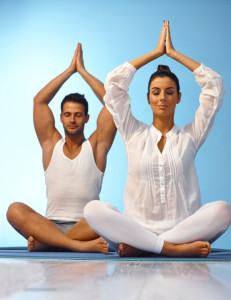
The inaugural International Yoga Day took place on June 21, 2015. Yoga originated in India thousands of years ago. The country’s Prime Minister, Narendra Modi, was integral to getting the date officially recognized; he proposed the idea at the United Nations General Assembly in September of 2014. The organization adopted his request on December 11, 2014 with the support of 194 nations.
The Words of Narendra Modi
In asking the U.N. to establish an International Yoga Day, Modi said the following: “Yoga is an invaluable gift of India’s ancient tradition. This tradition is 5000 years old. It embodies unity of mind and body; thought and action; restraint and fulfillment; harmony between man and nature; a holistic approach to health and well-being. It is not about exercise but to discover the sense of oneness with yourself, the world and the nature. By changing our lifestyle and creating consciousness, it can help us deal with climate change. Let us work towards adopting an International Yoga Day.”
Significance of June 21
June 21 is the summer solstice and the longest day of the year in the northern Hemisphere. For centuries, the date has been important to people of many cultures and religions worldwide. Modi proposed June 21 because of its unique significance.
Celebrating in India
Prime Minister Modi, who is Hindu, was an active participant in International Yoga Day. He led a crowd of over 35,000 people in New Delhi through 35 minutes of yoga poses. People from 84 nations, including a number of dignitaries, attended the event. It is estimated to have cost $4.67 million and also set two Guinness world records:
- Largest yoga class (35,985 people)
- Most nationalities at a yoga class (84)
Around the Globe
Many people took part in International Yoga Day. There were numerous celebrations throughout India. There were also large group sessions in Times Square, Peking University in Beijing and under the Eiffel Tower.
Benefits of Yoga
- Strength
Anyone who thinks yoga can’t help you get stronger has never tried it. Ashtanga and power yoga are two kinds that are extremely demanding. Hatha and Iyengar are less physically taxing, but still help tone muscles and build core strength. Health problems like back pain and arthritis are less likely to occur in people who are stronger. Greater strength can also help the elderly avoid debilitating falls.
- Flexibility
Greater flexibility is one of the primary benefits of the practice. Even if you can’t touch your toes to start, over time, committed practitioners will notice their bodies loosening up. Poses that seemed impossible become manageable. Being flexible can also greater insulate the body from injury.
- Happiness
Yoga is a known mood booster. People who regularly attend classes often report they are happier. Studies have linked this to elevated serotonin levels and lower cortisol levels. These results are even more pronounced in long-term practitioners.
- Concentration
Another benefit of yoga is that it can calm the mind and make it easier to focus on the tasks and problems at hand. Blocking out distracting thoughts, which tend to run through the mind in an endless loop, may be more feasible. Memory, coordination and reaction time have also been known to improve in people who are devoted to the practice.
- Sleep
Sleep is the way the body rejuvenates itself. People who consistently get an adequate amount of shut-eye are much healthier over the long term. The mind is easily over stimulated in the hectic pace of every-day life, which makes it hard to turn it off at night. Practicing yoga can help counter this effect and make a good night’s sleep more attainable.
Millions of people participate in yoga classes, and the benefits of doing so are hard to ignore. Hopefully, International Yoga Day will generate more interest in the practice and bring more people into the fold.

